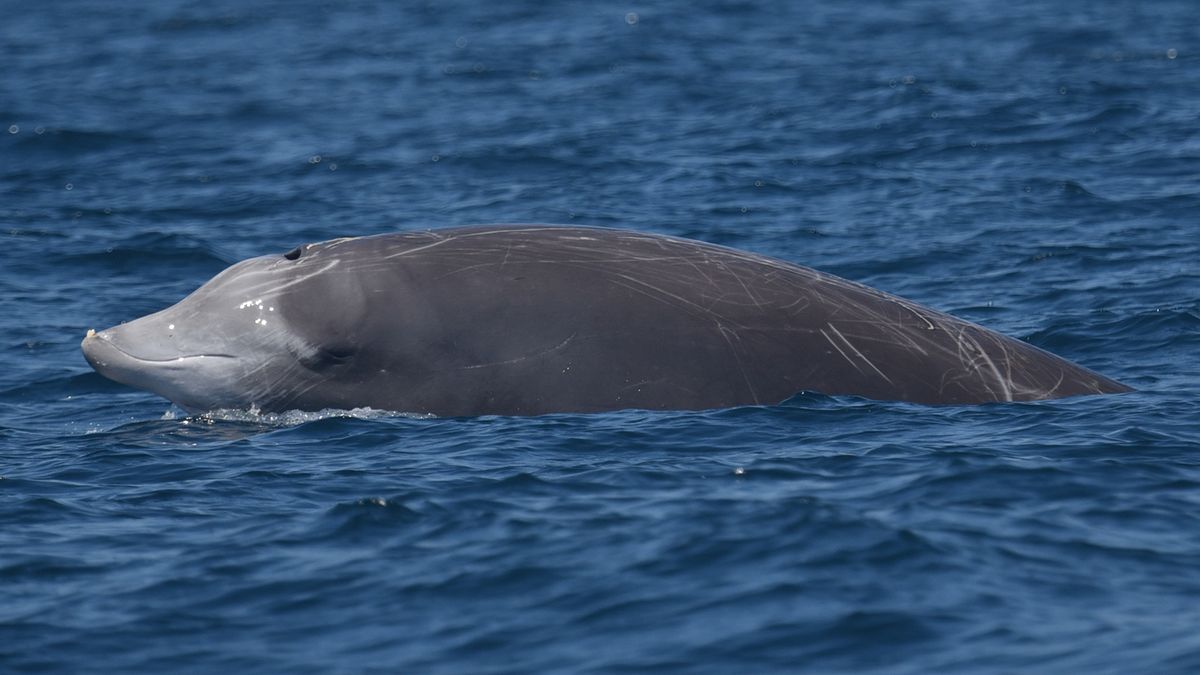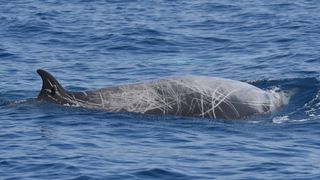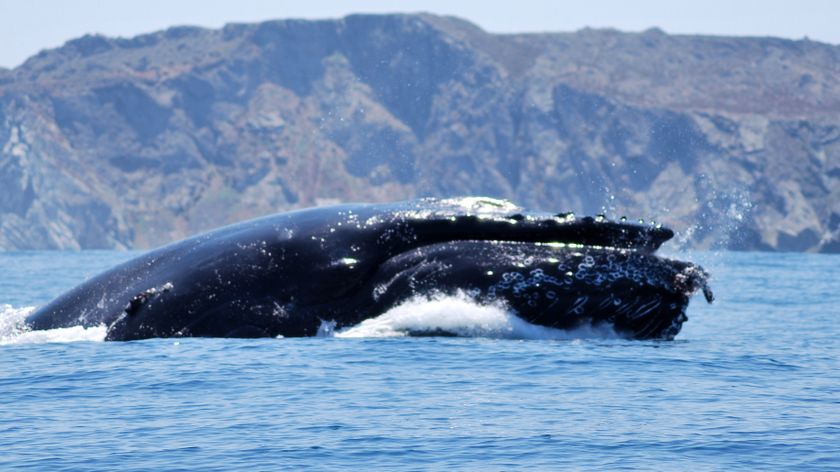Beaked whales can hold their breath for over 3 hours (and possibly longer)
New findings shatter previous dive records.

How long can you hold your breath? Even your best efforts can't come close to the breath-holding superpower of a Cuvier's beaked whale.
These whales were already known to dive deeper and longer than any other mammal, but new research shows that their marathon dives can last even longer than once thought.
When scientists recently examined data from thousands of whale dives, they found that one of these extreme divers held its breath for more than 3 hours, shattering the previously reported record — also held by the Cuvier's beaked whale (Ziphius cavirostris) — by over an hour.
Equally intriguing was the deep-diving whales' ability to recover relatively quickly from their exertions. One whale rested for just 20 minutes after a 2-hour dive, hinting that even what appear to be extreme dives (to us, at least) may be no big deal for this species after all, researchers reported in a new study.
Related: Watch rare footage of whales blowing 'bubble nets' to capture prey in a vortex of doom
Cuvier's beaked whales, also known as goose-beaked whales, can grow to be 23 feet (7 meters) long, and can weigh up to 6,800 lbs. (3,080 kilograms), according to the National Atmospheric and Oceanic Administration (NOAA). Mature males have two cone-shaped teeth that stick out from their lower jaws, and their bodies are often scored by long, pale scratches that are thought to be scars from mating competitions over females, according to the Alaska Department of Fish and Game.
The whales are found in deep ocean waters around most of the world, but because they spend very little time at the surface they are extremely challenging to observe in the wild, said lead study author Nicola Quick, a research scientist in the Duke Marine Lab at Duke University's Nicholas School of the Environment, in Durham, North Carolina.
Sign up for the Live Science daily newsletter now
Get the world’s most fascinating discoveries delivered straight to your inbox.
"They spend 90% of their time under the water, at depths or in shallower dives," Quick told Live Science. When the whales do come up for a rare breath, they surface for around 2 minutes on average before diving again, leaving marine scientists little time to spot the whales, deploy a satellite-linked location-tracking tag for data collection, or recover data from tags, Quick explained.
"It's like a blessing and a curse: No one knows a lot about beaked whales, so there's lots of questions! But then it's really hard to get data," she said.
Deep dives
For the study, Quick and her colleagues reviewed more than 3,680 dives performed between 2014 and 2018, by 23 tagged whales in waters off North Carolina's Cape Hatteras. The scientists divided the dives into two categories: foraging (the whales dine on squid and deep-sea fish) and non-foraging. They found that during non-foraging dives, when the animals were not actively hunting prey, the whales descended to depths of about 980 feet to 1,600 feet (300 to 500 m) on average, for an average of 30 minutes. Foraging dives, by comparison, were deeper and longer, reaching depths of around 5,760 feet (1,450 m) and lasting about 60 minutes on average, the researchers reported.
While researchers don't know for sure what the whales are doing in the ocean depths when they aren't hunting, they might have evolved the ability to linger in deeper (and darker) waters to avoid predators such as killer whales, which hunt visually, Quick said.
Related: Photos: See the world's cutest sea creatures

Diving mammals can remain submerged after they deplete stored oxygen by switching to anaerobic respiration, which causes lactic acid to build up in body tissues, contributing to muscle fatigue. Prior research on other mammalian deep-sea divers has shown that they complete about 95% of their dives before they need to switch to anaerobic respiration, according to the study. When the scientists applied that formula to their data, they estimated that Cuvier's beaked whales could hold their breath for about 78 minutes before anaerobic respiration would take over.
And some of the whales' dives were much, much longer than that.
Previously, in 2014, another team of researchers reported a record-breaking Cuvier's beaked whale dive that lasted 2 hours and 17.5 minutes. However, when the new study's authors examined data from 2017, they discovered a pair of extreme dives performed by one whale that obliterated the existing record. The first dive lasted 2 hours and 53 minutes, and that new record was quickly surpassed by an even longer dive of 3 hours and 42 minutes, according to the study.
"It goes against what we think mammals should be able to do," Quick said.
Swift recovery
Even more surprising was the discovery that the recovery time for whales that dove deep and long wasn't necessarily longer than it was for whales that performed shorter and shallower dives. Extreme exertion for most mammals comes at a cost, and typically requires a lengthy period of rest and recovery. Data from the thousands of whale dives suggested that these extra-long dives were pushing the limit of the whales' endurance, "so we really did expect to see some sort of increased recovery time on those long dives," Quick said.
Instead, the researchers found no clear pattern in the whales' resting times. One whale dove for 78 minutes, followed by a stretch of nearly 4 hours during which it made shallower dives interspersed with surface breaks. Another whale completed a 2-hour dive, and resumed its deep diving within 20 minutes.
One possible explanation is that the whales have metabolically decoupled the mechanisms that resupply them with oxygen and address muscle fatigue — if they even are fatigued after these extreme dives, Quick said.
Then again, "maybe what we think is extreme for these guys, based on what we know so far, is just not extreme for them," she added.
The findings were published online today (Sept. 23) in the Journal of Experimental Biology.
Originally published on Live Science.

Mindy Weisberger is an editor at Scholastic and a former Live Science channel editor and senior writer. She has reported on general science, covering climate change, paleontology, biology and space. Mindy studied film at Columbia University; prior to Live Science she produced, wrote and directed media for the American Museum of Natural History in New York City. Her videos about dinosaurs, astrophysics, biodiversity and evolution appear in museums and science centers worldwide, earning awards such as the CINE Golden Eagle and the Communicator Award of Excellence. Her writing has also appeared in Scientific American, The Washington Post and How It Works Magazine. Her book "Rise of the Zombie Bugs: The Surprising Science of Parasitic Mind Control" will be published in spring 2025 by Johns Hopkins University Press.











